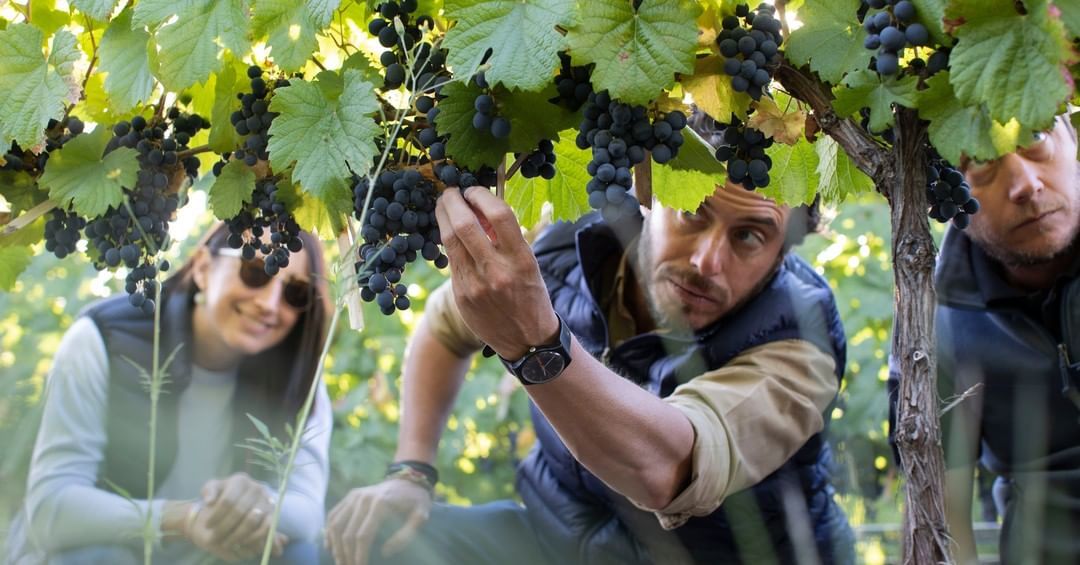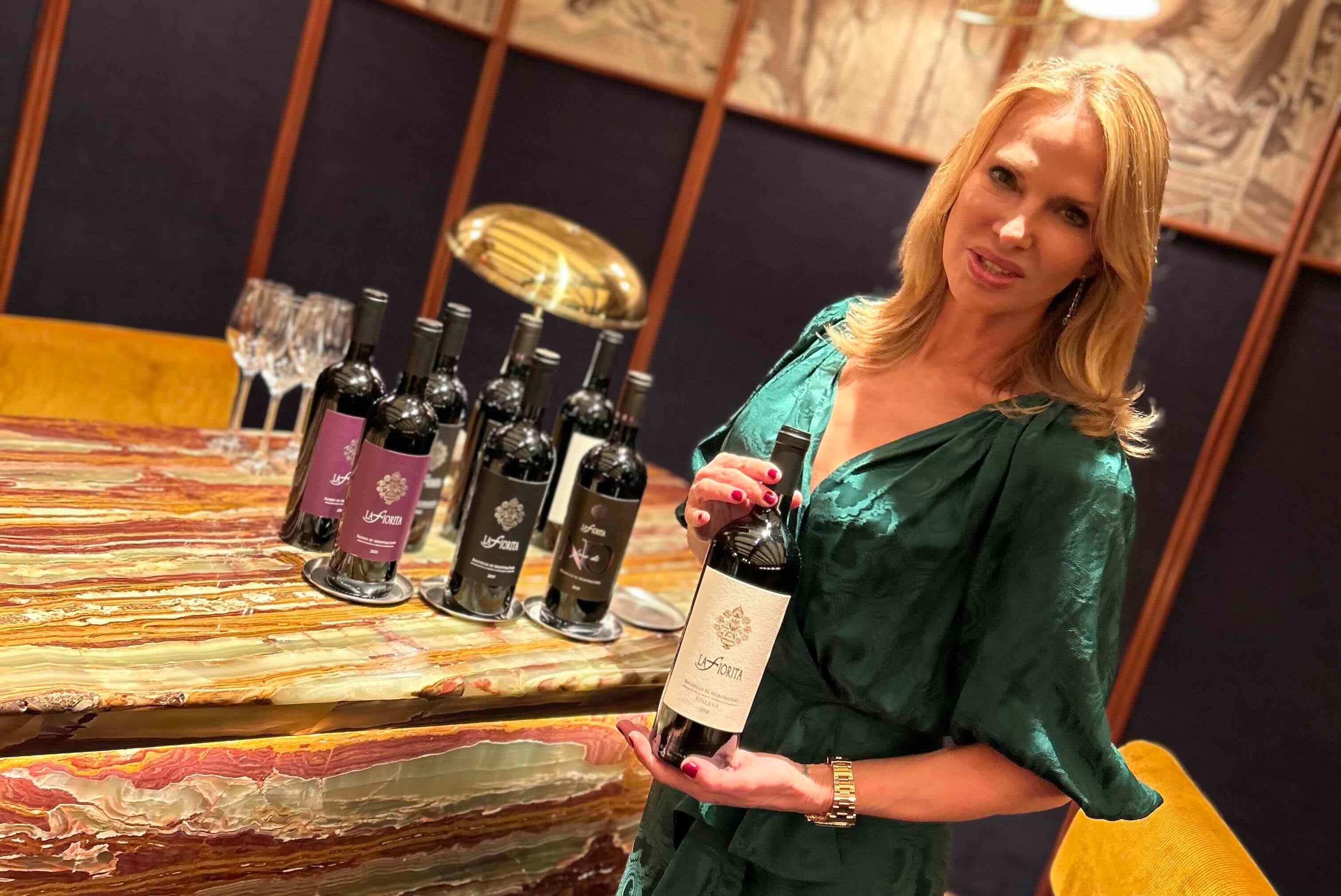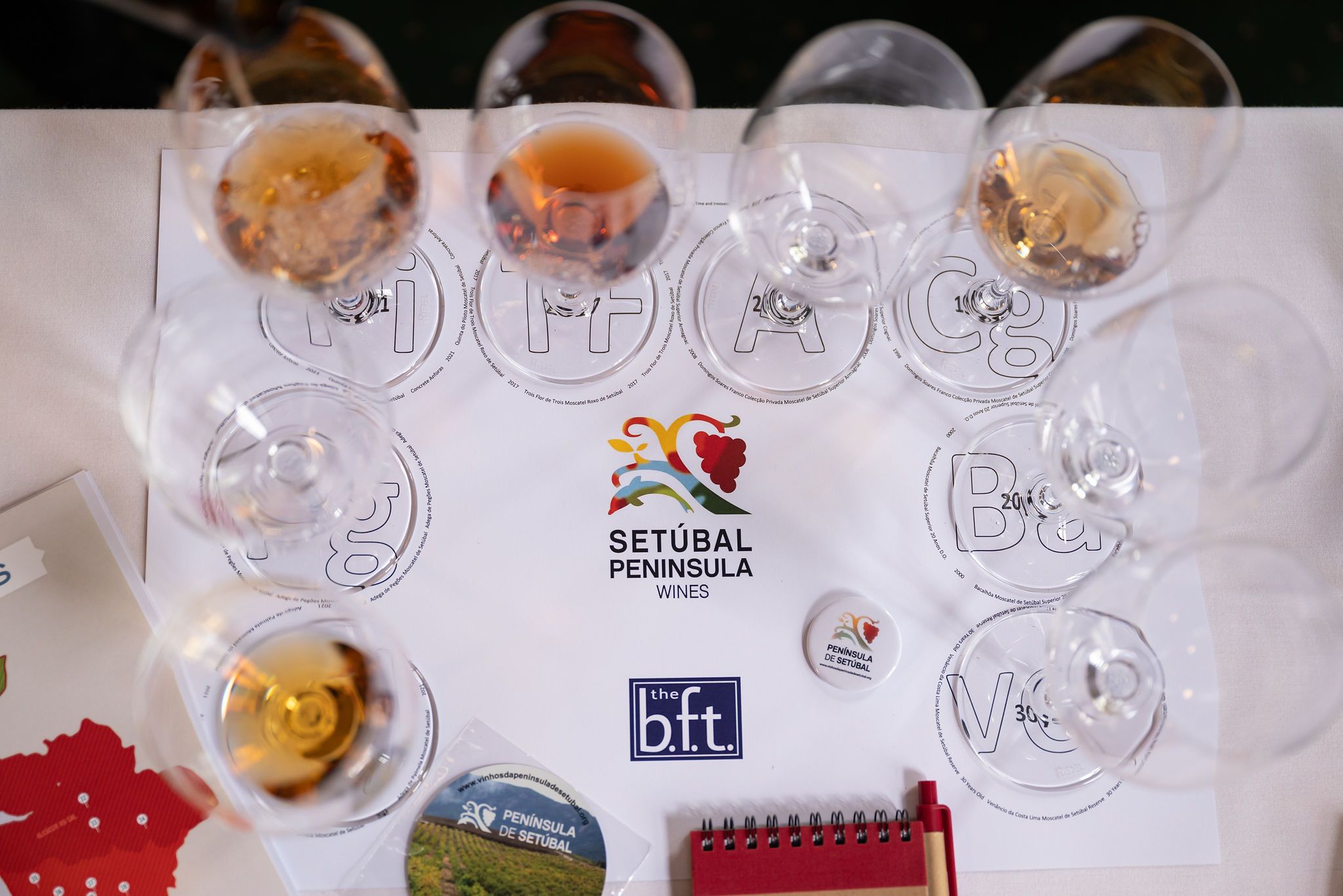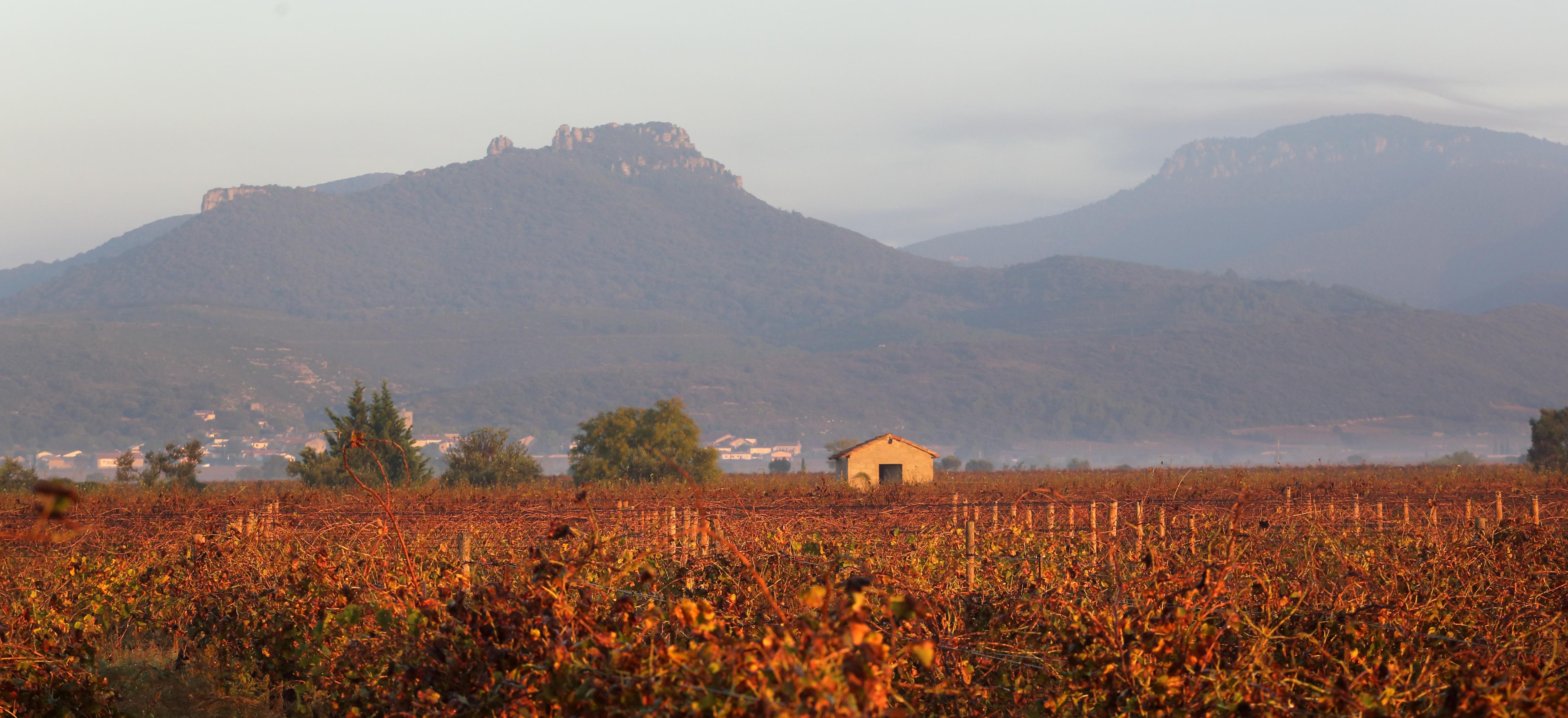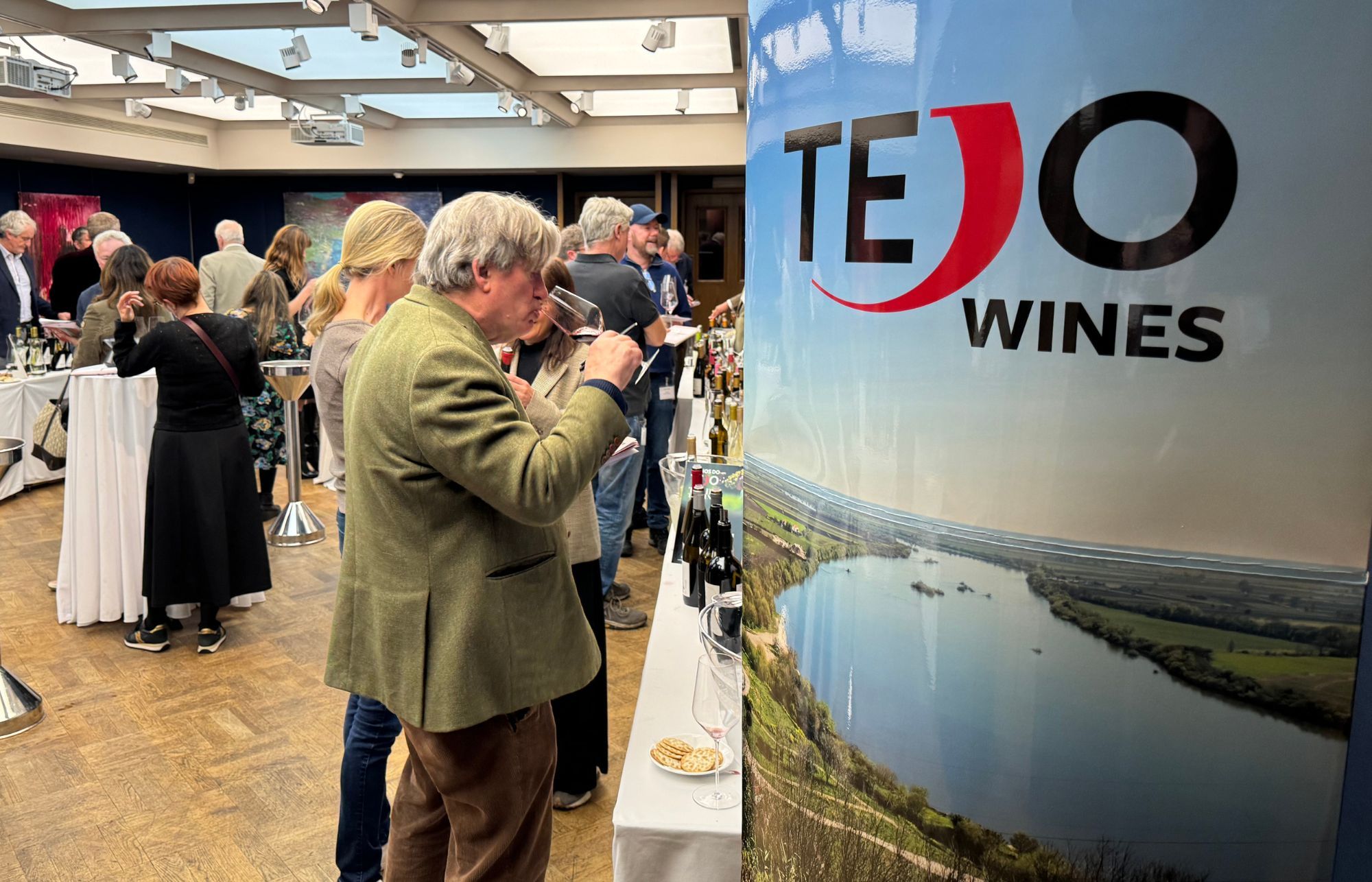“Work in the winery is extremely important because if you want to make a great wine you need to have a lot of knowledge and many times it is the definition of the style but for me we cultivate wines – the most important thing for me is the vineyard – vinification is not the most important thing,” says Sebastián Zuccardi about his priorities.

Zuccardi Valle de Uco – simply one of the best wineries in the world
It’s not for nothing that Wine Enthusiast named Zuccardi the Best New World Winery last year – the building rises majestically out of the floor of Argentina’s Uco Valley, blending into the immense beauty of the mountain scenery and made of the same materials as its surroundings. Inside, the vinification tanks are also concrete, made from the same alluvial deposits that the vines are planted in – all in all the winery has a deep respect for nature and for place.
The award isn’t a flash in the pan – The World’s Best Vineyard Academy has just inducted Zuccardi into its hall of fame, having won top gong for the past three years – a move that’s presumably engineered so other people have got a chance of winning! José Alberto Zuccardi has also just been named ‘A Legend of Argentine Wine’ and for the third year in a row a Zuccardi wine has been awarded 100 Parker points…
To get an idea of why Zuccardi is so hot at the moment I met up with José Alberto’s son Sebastián, who is the winemaker, and tasted through a selection of his ‘Paraje’ wines – from specific sub-regions – and the new Finca Canal Uco, 2020 which is a single vineyard wine now selling through Bordeaux’s La Place.
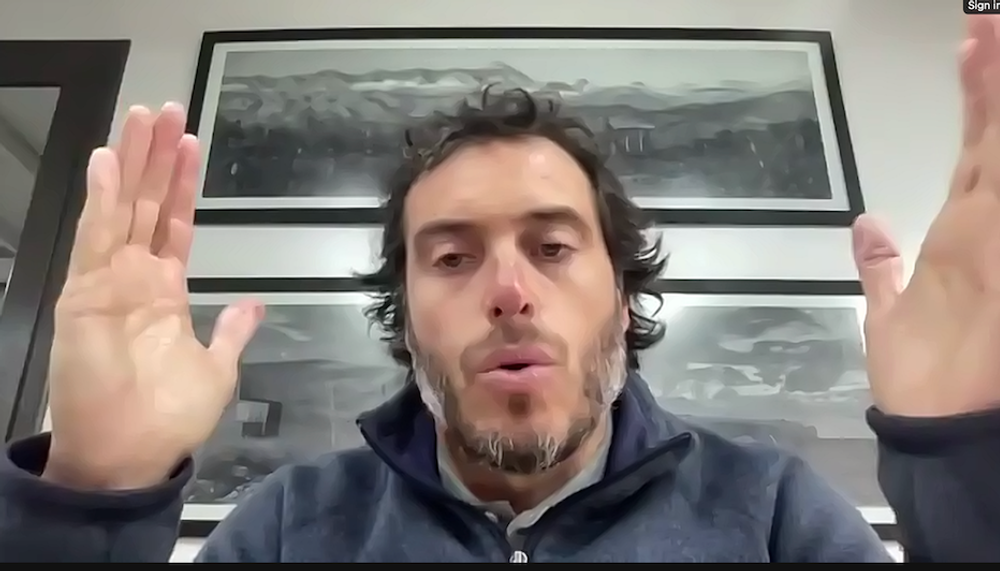
Sebastián Zuccardi, Zoom interview, August 3, 2023
A man with a vision
Speaking with him direct from the family winery in the Uco Valley, Sebastián Zuccardi is quite clearly a man with a vision – he breathes inspiration and enthusiasm in equal measure – with a freshness that seems to be fuelled by high mountain air and the pure luminosity of the sun.
Sebastián, a third-generation winemaker, admits that the accolades are always welcome but only in so much as they are an affirmation of his approach.
“The recognitions help in that they give me more confidence in what I am doing,” he admits, adding that because Zuccardi is a family-owned business he has less outside pressure to make wines that are dictated just by market forces. “With wineries that are not family-owned the market very often has the most influence…. at the end of the day I make wines for me, because I am not sure that people know what they really want.”
Sebastián credits his total passion for wine as one of the key drivers to how he approaches winemaking – always aiming for freshness, texture and a backbone of acidity in the wine.
“I like to say that I ‘m a drinker before a winemaker, my passion is wine – I’m always thinking about wine – and every time I drink a bottle of wine I am looking for three things and the same three things when I make the wines: The first is pleasure, when I open a bottle of wine I want to drink the bottle of wine and this is very important for me; the second is that the wine tells me about the history of the place or the producer and about the year when the wine was made; and the third in general, is that many of the bottles we open are at the table with food. I like to pick wines and make wines that have the balance to be part of the table. When you put the wine with food you need the freshness, you need the texture, you need the acidity in the wine.”

“I grew up in the vineyard”: Sebastián Zuccardi has an almost spiritual connection to the Uco Valley
A new approach to making Malbec
Although Zuccardi makes wines from a range of different grape varieties, it is Malbec that is at the core of the range and for which it is most famous for. The Zuccardi style of Malbec, which can be seen as both modern and traditional at the same time, has been well received at home as well as abroad thanks to a new generation of sommelier that has made Buenos Aries and Argentina in general such a vibrant wine culture. Production-wise consumption is split 50/50 with the largest export countries (in order) being US, UK, Canada and Brazil. The La Place distribution of Finca Canal Uco Sebastián describes as a learning curve which can also open up avenues into Asia.
One thing for sure is that Zuccardi’s Malbecs are light years away from the concentrated fruit bombs that Argentina excelled in producing during the 1990s.
“For many years in Argentina concentration was a very important thing, in the 1990s an Argentine wine was something black, very high in alcohol with a lot of structure and a lot of feeling of sweetness. This is changing especially in my family – because we started with this movement, our challenge is about sweetness – we like to focus more on texture, so all the work we do from the selection of the place with the viticulture and then in the winery is try to avoid the sweetness and focus our wines more in the balance, the elegance, in the tension and in the texture.”
Sebastián explains that the acidity in the wines comes from a number of things – partly from the calcaire soil, that accentuates the feeling of acidity, the fact that (on average) he is harvesting 20 days earlier than his parents’ generation, and also that he works a lot with stems.
“Why am I saying not ‘whole bunch’? Because I am not looking to carbonic maceration, because carbonic maceration is a technique of vinifaction. If I give you three wines from three different areas in the Uco Valley made with cartbonic maceration we are going to talk more about the vinification than the place, but I believe the stem bring also the message of the soils. We press this to improve the backbone of the wines.”

Inside the magnificently designed Zuccardi Valle de Uco – the tanks were built after 10 years of concrete research
Vineyard over winery
Throughout our discussion Sebastián emphasises the fact that, for him, winemaking begins and ends in the vineyard – with work in the winery simply a way of transparently reflecting the ‘message of the soils’ or the wines’ strong sense of place.
Although he is the third generation of winemaker in the family, the first two generations were more grape growers than winemakers, with them employing outside help.
“The revolution in the winemaking in our family happened when I joined the family (business) and the great thing of this is that I grew up in the vineyard, because my father and my grandfather had their place in the vineyard, so I didn’t grow in the winery – this was very important because when I finished in secondary school in ’98 the most important person in the winery was the oenologist – the agronomist… nobody knows who managed the vineyard at that time – so I studied viticulture, I started in the vineyards and then I moved to the winery.”
“It’s easier to go from the vineyard to the winery than from the winery to the vineyard – in the vineyards you manage nothing, who runs? The nature… and you have to be obedient. In the winery you feel like you are god because you create, you ferment grapes… work in the winery is extremely important because if you want to make a great wine you need to have a lot of knowledge and many times it is the definition of the style but for me we cultivate wines – the most important thing for me is the vineyard…vinification is not the most important thing.”
Having said that, the winery itself is driven by the need for the wines to express a sense of place and that is not through the use of 225-litre barrels! Simpliicity is key and, after 10 years of concrete research, the winery was built in 2014 with the vinification tanks made of concrete with no epoxy – a key driver being to keep tension within the wine.
Along with the winery’s recent success has come offers of making wines in other parts of the world, a temptation Sebastián has so far resisted because he wants to live surrounded by his vines “it’s important to have an everyday relationship with the vineyard,” he says.
And where he is on his journey at Zuccardi? “The journey is not yet finished because in the past 15 years – in the vineyard every year has different challenges – not big style changes, more details.”
Mountain wines with diversity at their core

The sub-regions of the Uco Valley
Just after joining the family business, Sebastián commissioned an in-depth research and development project into the vineyards – to understand better the make-up of the region’s soils, topography and climate.
Our discussion begins with him presenting some of the findings of the project which gave the Zuccardi business direction and its ethos of ‘showing the potential of the place.’
The two central pillars of his vision are that this is a region of incredible diversity, and what Zuccardi is making are ‘mountain wines.’
Sebastian explains in detail that the Uco Valley is a high altitude desert with different microclimates created by the topography of the land, altitude and, just as importantly, the distance from the mountains. He stresses that you cannot talk just about altitude here – you have to consider the latitude as well. He gives an example of two vineyards he has which are on the same altitude but, because one is nearer the Andes, harvest time has a difference of a whole month.
As for the mountains themselves, the Andes is not one mountain range but are made up of four bands of mountains (running North to South) each with different rock types. Through seismic activity and then rivers cutting through and carrying these varying rocks and soils into alluvial fans on the slopes below, you end up with a region with a massive variety of different soils and rock types that have unique combinations – calcareous covered granite, being one example.
Sebastián counts 44 alluvial fans coming out of the Andes with each river system bringing a vast array of rocks and soil types and just one fan covering as many as five different wine regions.
With no ocean influence, little rain and low environmental humidity, he describes the most important work he has in the vineyard is with irrigation – “Irrigation is my most important work, with the challenge being to create a deep root system.”
Tasting four Zuccardi wines
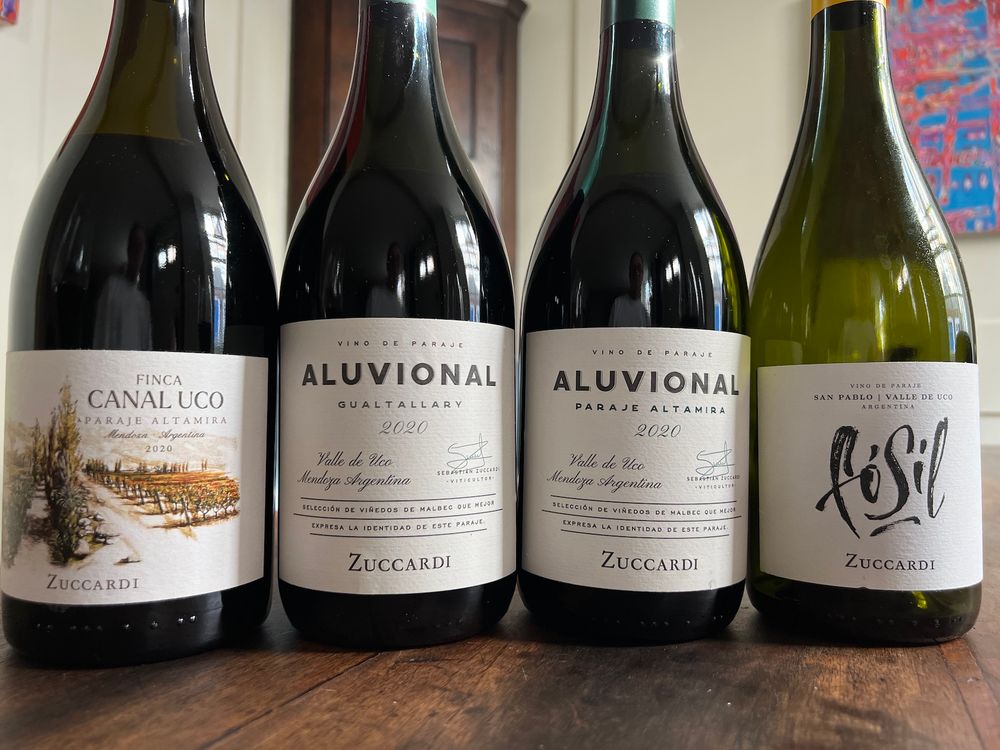
The Zuccardi portfolio is split into six bands with ascending quality and site-specificity: entry level wines are regional wines, then village wines, viticulturist wines (largely made in honour of his ancestors), Paraje wines (or wines related to a specific place), vineyard wines and, at the top of the pyramid, parcel wines.
The four wines in the tasting include three Paraje wines – the places being San Pablo, Gualtallary and Paraje Altamaria – and one vineyard wine, Finca Canal Uco
Fósil Chardonnay 2022, Zuccardi, San Pablo, Valle de Uco, 13% abv
The first Paraje wine is from San Pablo a zone that is just 300 metres from the Andes at an altitude of 1,400 metres where the fruit for this 100% Chardonnay is grown on 11-year-old vines. Even in warm years this location brings a lively acidity to the wine. This stunning wine comes across as a premier cru Chablis made from a recent, hot vintage.
To look at, the wine is light gold; there are vinous aromatics – herbal, lemon curd, oyster shell – which become riper and more intense as it opens up in the glass. There’s a creamy butter-like quality that comes perhaps from the oak (30% is fermented in barrel). In the mouth the wine is generous, and has notes of orange skin, lime cordial, yet what keeps this wine balanced and lively on the palate is a mineral-charged freshness that comes from the altitude and proximity to the mountains.
We then tasted two wines under the ‘Aluvional’ banner, wines made with grapes grown on the finest alluvial soils in the Uco Valley.
Aluvional, Gualtallary, 2020, Zuccardi, Vino de Paraje
Vineyards here lie at the base of the Jaboncillo slopes, over 1400m up with the vines growing in alluvial soils with calcium, carbonate-covered gravel, that gives the wines a drier more austere side than those grown on sandy aeolian soils.
Beautifully restrained, this is a Malbec with a strong sense of place – tense, austere and mineral-driven. To look at the wine is deep inky purple; the aromatics are less ‘in your face’ than you might expect with Argentine Malbec instead you find high class leather, milk chocolate, wild flowers; in the mouth the wine is pure, clean, with a wet stone texture and notes of wild black cherries and herbs, there’s a lovely grip on the finish.
Aluvional, Paraje Altamaria, 2020, Zuccardi, Vino de Paraje
The vineyards for this wine lie at the Southern end of the Uco Valley – located on the highest section of the alluvial fan of the Tanúyan River – 1100 metres up with the 14 year-old vines planted on granitic/ calcareous soils.
This wine is more concentrated than the Aluvional wine from Gualtallary with a powerful raw beauty – to look at it is deep inky purple; it has an exciting rustic quality, feral, intense blue fruit, small blue flowers, wet gravel. On the palate it is concentrated, with bags of flavour (blackberry, plum), savoury notes, precise, but with a very smooth texture – almost imperceptibly-fine chalky tannins – flavours are rich and complex, I found milk and dark chocolate, with the alcohol present like a bitter cherry liquer chocolate. A wonderful contrast to the other Aluvional wine.
Finca Canal Uco, 2020, Zuccardi, A Paraje Altamaria,
The vineyard that the fruit for this magnificently pure, medium-bodied Malbec, comes from, was planted in 2007 using massal selections from the family vineyards in Maipú. The soils are deep and silty with stones covered in calcium carbonate about a metre down.
There is a perceptible jump in complexity from the two Aluvional wines tasted. The wine is deep inky purple; the nose is intense and enchanting with blueberries, smoke, fresh herbs, iodine, violets and dark earth; medium weight in the mouth, I found blue and black fruit (plum, blackberry) with herbs and dark chocolate, the tannins are powdery-fine, with a beautiful purity and a lovely tart twist on the finish. The acidity creates a real ‘zing’ to the fruit and gives the wine freshness, quite remarkably so given the warmth of the 2020 vintage.
The Zuccardi wines are imported and sold in the UK through Hatch Mansfield except for Finca Canal Uco which is available through Bordeaux La Place. Hatch Mansfield is a commercial partner of The Buyer. To discover more about them click here.
